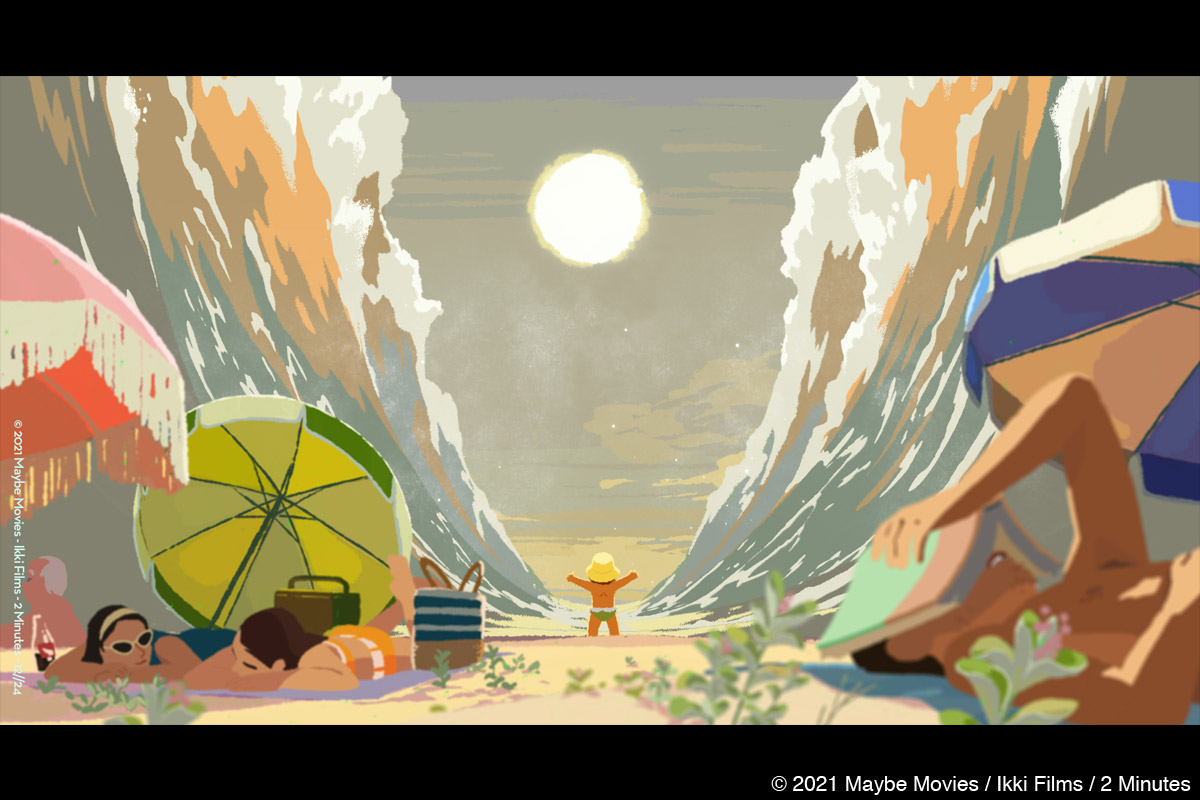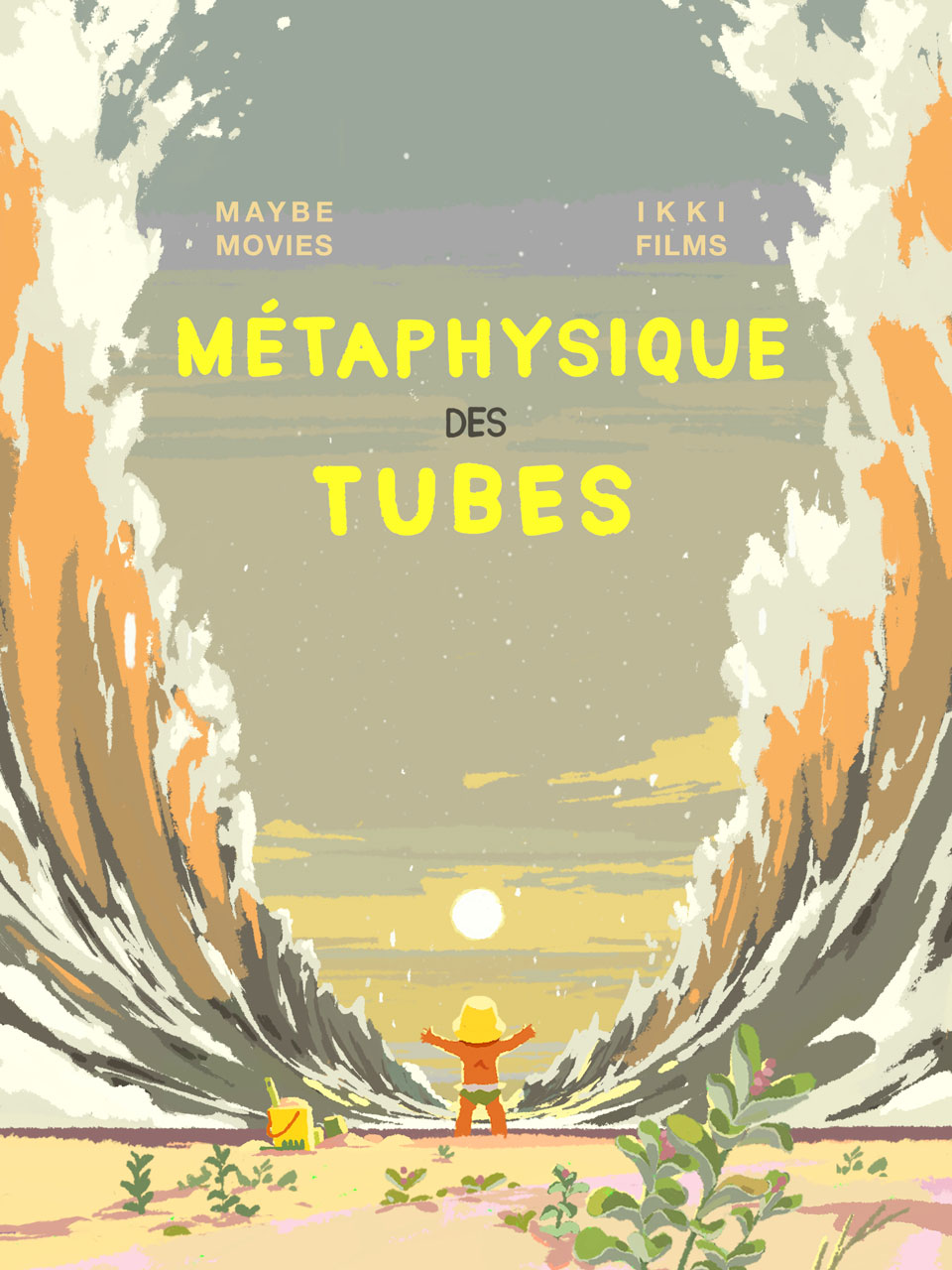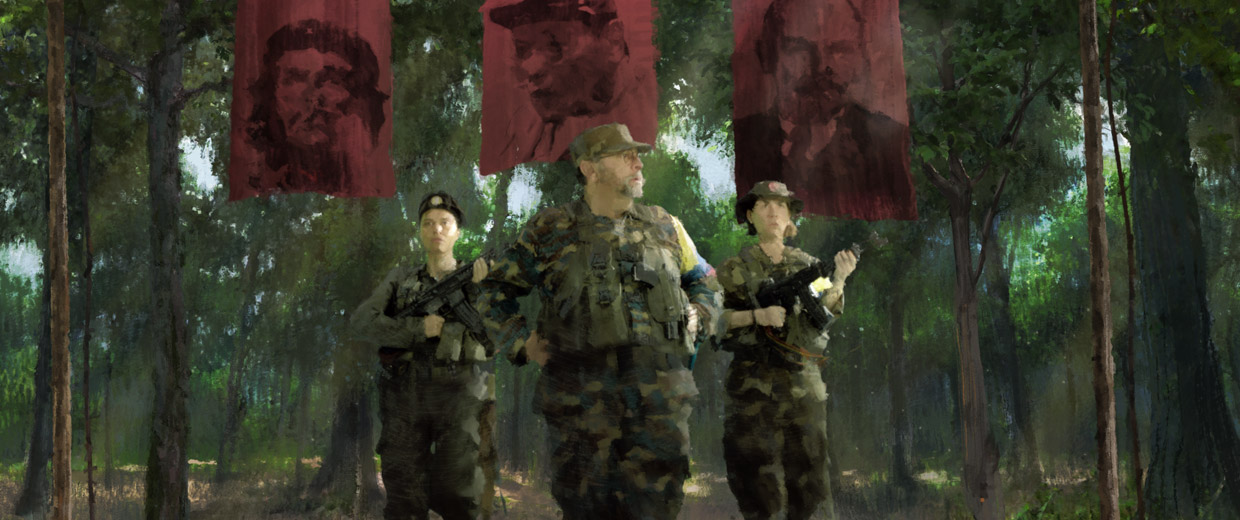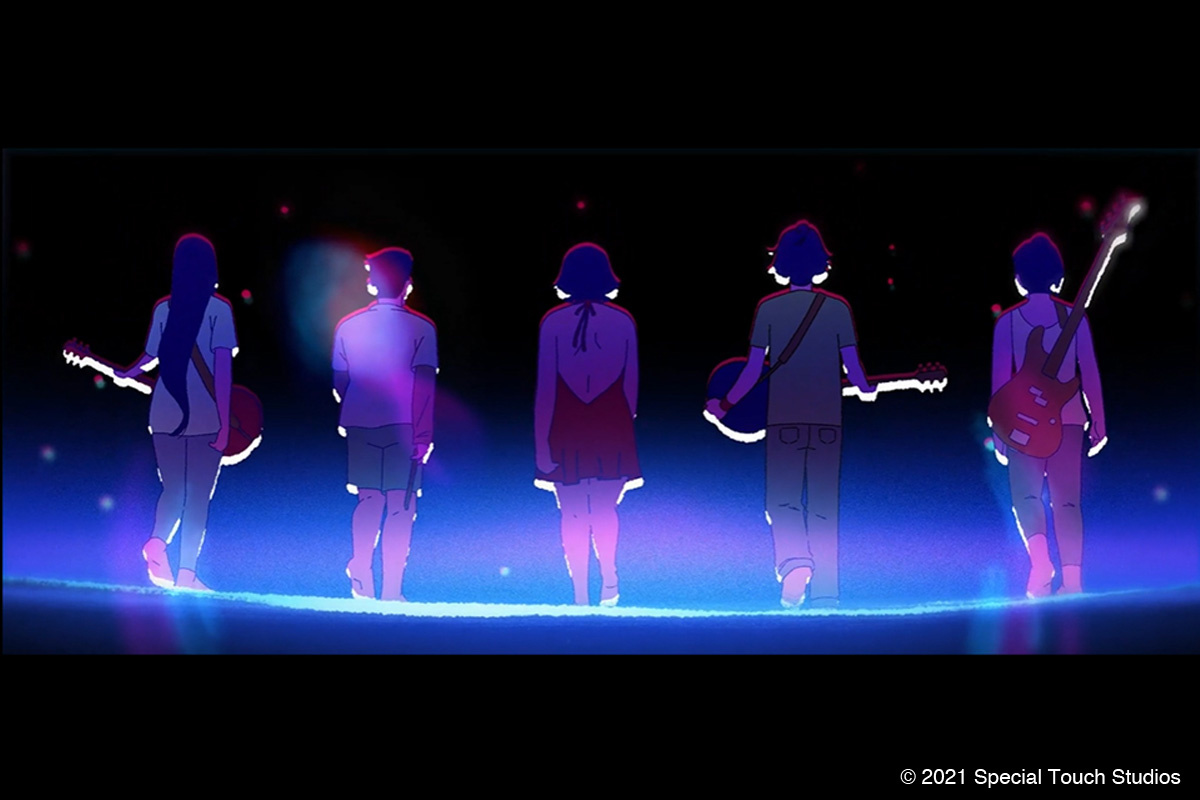The Character of Rain
(Status: In Development)
Synopsis
Amélie, a 2-and-a-half-year-old Belgian girl born in Japan, thinks she is God. From her wide awake and acerbic point of view, she believes she can make plants grow in the garden, or cross the sea by foot.
She thinks she’s at the center of everything and she has only one goal: to convert the world to her cult. Unfortunately, Almighty Amélie’s power seems limited to her nanny, Nishio-san.
Between her family who treats her like any other child and a housekeeper who divinizes her, the choice is clear: Amélie will be Japanese. But her world will fall apart at the age of 3, when she learns that she will have to leave Japan eventually.
The Character of Rain
Director: Liane-Cho Han
Authors: Aude Py and Liane-Cho Han (Adaptation from Métaphysique des Tubes by Amélie Nothomb)
Producers: Henri Magalon & Claire La Combe (Maybe Movies, France), Nidia Santiago & Edwina Liard (Ikki Films, France)
Target Audience: Family
Technique: 2D digital
We came across the warm, beautiful trailer of The Character of Rain, a feature film project directed by Liane-Cho Han, at Cartoon Movie 2021. He is known as the animation director of Rémi Chayé’s two awards-winning films Long Way North* (2015) and Calamity, a Childhood of Martha Jane Cannary (2020).
The film project is an animation adaptation of Métaphysique des Tubes (English title: The Character of Rain) written by Amélie Nothomb, a hit novelist in the French-speaking community. In the trailer you can see the world through the imaginative eyes of the sensitive and curious protagonist, a two-and-a-half year old Belgian girl, born in Japan.
We are happy to introduce to you this attractive film project with the director Liane-Cho Han, who will tell us the story behind the project.
*: You can read our special long interview with Rémi Chayé and Liane-Cho Han on the detailed story behind Long Way North here.
Interview with Liane-Cho Han
Hideki Nagaishi (HN): Could you let us know the key points of your animated feature film project that you would like to appeal to the prospective audience, including the message or experience you want to deliver through the film the most?
Liane-Cho Han: This movie is about the story of a two-and-a-half year old Belgian girl, born in Japan, who believes she’s god. But it’s also a coming of age story from the toddler stage to the child stage. When they are just born, children believe that they are at the center of the universe, like a god. And it takes some time for them to realize that they are actually not. Usually it’s during their first three years and it doesn’t come without fights where they try to resist against this reality. And this aspect of the movie became clear in my head when I just started to be a dad. As a father, I could see clearly and live this transition my son was having.
As parents, we don’t know what’s going on in our kids’ head, especially at this age. This movie is also the possibility of having a guess of it and playing with interpretations thanks to the rich medium that is animation.
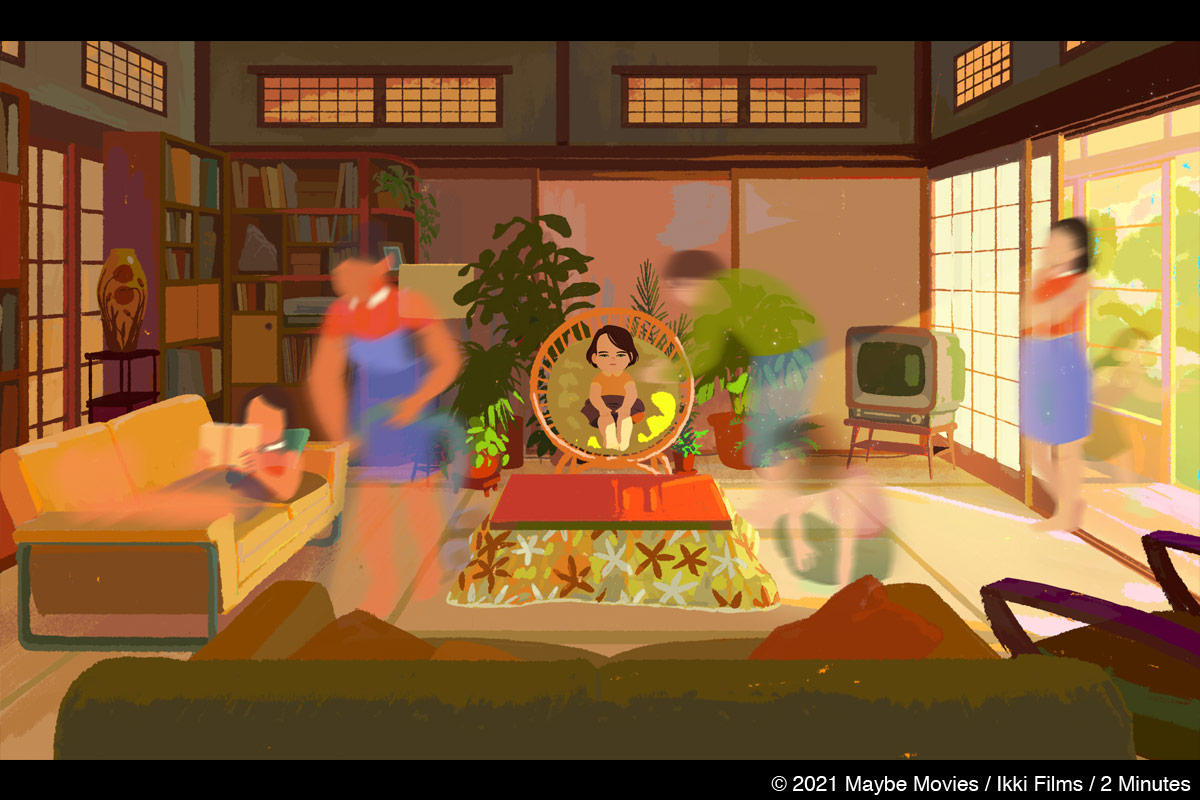
HN: Why did you decide on an animation adaptation of Amélie Nothomb’s Metaphysique des tubes (English title: The Character of Rain) as being the first film you direct?
Liane-Cho Han: I read the book when I was 19 years old. Even though I was not the kind of teenager who reads a lot of books, I fell immediately in love with this story. I was just starting out as an animation student and I already had clear pictures in my head. At that time, it was just a fantasy of adaptation in my head. I would have not believed I would have the opportunity to do it. It was really after my experience as a storyboarder in many feature films, especially in Long Way North and Calamity: A Childhood of Martha Jane Cannary (Calamity) that I started to feel ready. Rémi Chayé was, and still is, a big inspiration for me as a director. I also discovered my artistic family as the artistic direction of the movie has some strong roots from Rémi’s movie style. But I think what made me take this big first step toward directing is when I had my son. From that moment, I saw the book in a different way. It was not the story of this special girl who believed she was god but the story of what all kids are going through at this age. From that moment, I wanted this story to be universal.

HN: I would like to hear about the journey of developing the trailer. How did this film project start?
Liane-Cho Han: It started when I wrote a letter to the book author, Amélie Nothomb. I decided to write a handwritten letter. And I had not done that since high school… I didn’t really believe that it would work but it did. The book editor, Albin Michel, replied to me and from then, things went pretty fast. I found my producers, Maybe Movies and Ikki Films. We got the rights. We could ask Eddine Noël, who was the layout background supervisor on Calamity, and Marietta Ren, who was one of the storyboarders on Calamity, to help with some art development. We also found our co-scriptwriter, Aude Py. And after we got some funding, we could start the pilot. We called our core artists and technicians like Maïlys Vallade, Patrice Suau, and many more who worked on Long Way North and Calamity. And also some new one like Tévy Dubray who was our compositing artist. Studio 2 Minutes, which co-produced Rémi Chayé’s features, got on board with enthusiasm and we could start working using the same pipeline as Calamity. Thanks to the trailer, we were able to make some adjustments to fit with the new artistic style we wanted to aim for.
HN: What do you and Aude Py take care in the most when finding the best way of writing a script for bringing the story of the original novel to an animated feature film format? Are you adding any original elements to the film?
Liane-Cho Han: Books and movies have different ways of storytelling. What works on books doesn’t necessarily work in movies. That’s why we need to adjust and also add original elements to make this adaptation work the way we believe is the best. What we are particularly taking care of, is to be sure that it could be addressed to a family audience. Young children, sisters & brothers and adults should enjoy the movie at their level. That, I believe, is our main challenge as the book is not addressed to small kids. And on top of that, I really want this movie to be universal, popular. I don’t come from a very intellectual background, I come from pop culture. That’s the way I discovered and enjoyed the book and that’s the way I would like this movie to be told.
HN: In the trailer revealed at Cartoon Movie 2021, I can see some shots with fantasy elements, which can make an attractive visualization of the world as seen through the eyes of a toddler, by using the power of animation as a visual storytelling medium. That led to me having high expectations for the final film.
I would like to hear the story behind those shots. Where did the visual inspirations for those kind of scenes come from? And what did you take care in when you developed those scenes?
Liane-Cho Han: When I had this early fantasy to adapt the book in animation, I already knew that I wanted to use the fantasy, the magic aspect, that animation can bring. The events told by Amélie in the book can be transposed in a realistic way of a kid living, but in her outspoken interpretation, Amélie plays a lot with the reader. For the movie, we must exaggerate Amélie’s point of view and emotional evolution to illustrate properly the quirky tone of the book. And for that we use the power of animation. In the trailer, when she’s in rage at the age of two, I pictured her like a monster, enveloped in boiled water, as water is her main element. It also brings a lot of humor, different from the humor in the book of course, but a more visual humor.
And of course, I grew up with Japanese animation, especially from Studio Ghibli movies like My Neighbor Totoro, Spirited Away, Ponyo, which are big inspirations for me when I wrote the pilot with Aude and also when I storyboarded it with Maïlys.
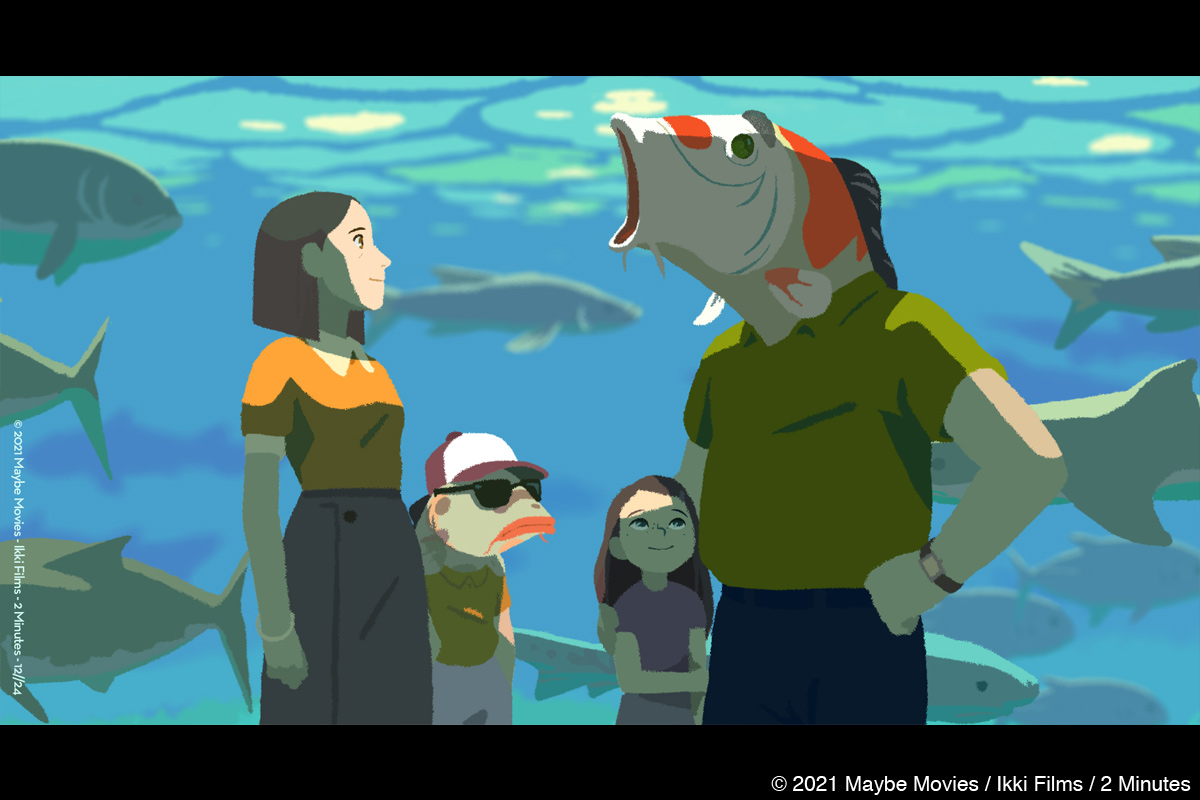
HN: Could you let us know the most important characteristic and goal of the visual design of characters and the universe for the story, including the use of color?
Liane-Cho Han: As I said a bit earlier, we used the same artistic roots from Rémi’s movies, and we adapt them to this particular story. The designs are warmer and rounder, they have a more pastel texture, like you can see in some children’s illustration books. We also use lens blur and glow: I always loved to play with the depth of field, it gives some other possibilities in terms of storytelling, and also with the glow which brings a specific aspect of magic in the picture. We wanted to have the color as narrative as possible. We needed to feel the mood and the fantasy in every scene.
About the color management, it was really teamwork between the production designer Eddine Nöel, the two artistic directors, Maïlys Vallade and Patrice Suau, and myself. We had a lot of discussions together so we could nail the right tone and the right atmosphere in every scene.


